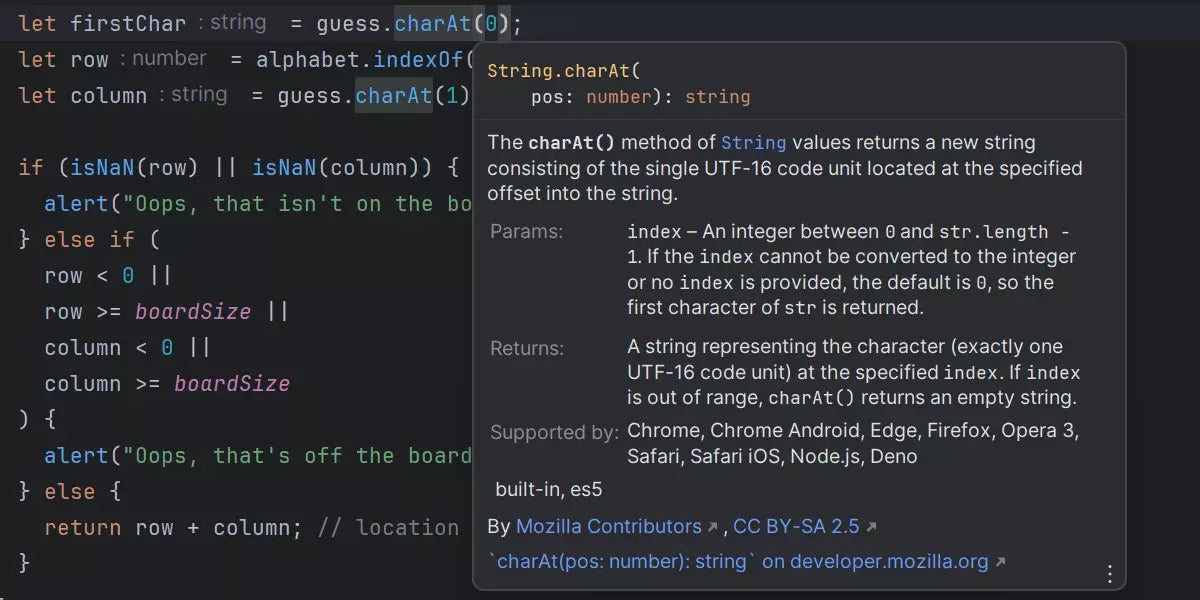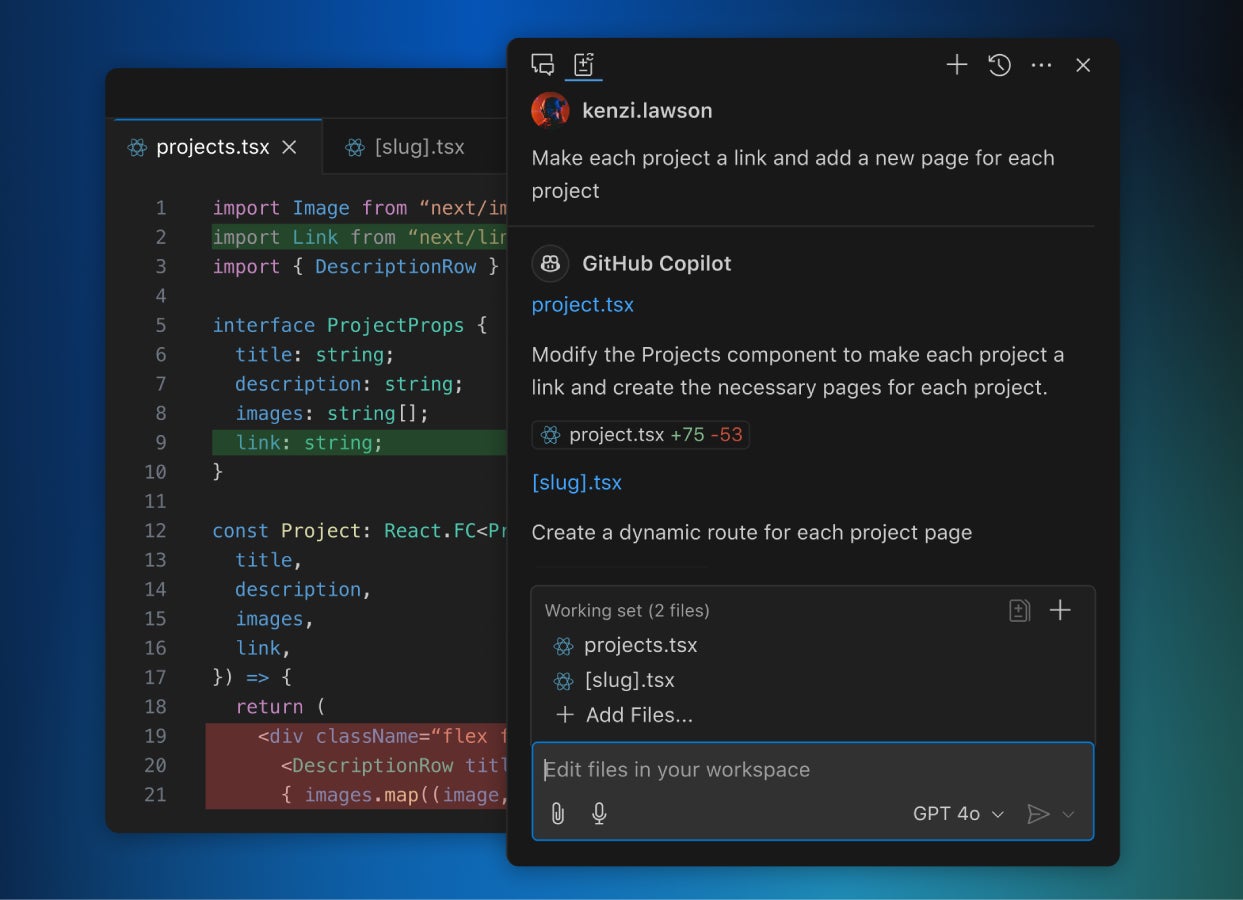WebStorm and Visual Studio Code target web and application development, but the platforms differ significantly. WebStorm is a proprietary integrated development environment, while Microsoft’s VS Code is an open-source, lightweight code editor.
For a talented JavaScript programmer, WebStorm and VS Code can take a programming project from start to finish. Which platform is best for you depends on the built-in utilities you need out of the box.
What is WebStorm?
Billed as the “Smartest JavaScript IDE,” WebStorm focuses on making programming faster and easier through advanced, next-generation technologies.
WebStorm provides extensive automated processes and built-in tools to handle complex programming tasks. Other features include unit testing, advanced version control, and a built-in HTTP client.

What is Visual Studio Code?
Visual Studio Code is a free, popular, and lightweight source code editor for many languages. Supported languages include JavaScript, Java, C++, and Python.
It’s important to note that VS Code is not an IDE, which can lead to confusion. Visual Studio is Microsoft’s IDE platform, while Visual Studio Code/VS Code is Microsoft’s code editor; the two products can be used together.
However, VS Code does include advanced features like syntax highlighting, intelligent code completion, and debugging support.
WebStorm vs. Visual Studio Code: Feature comparison
| Features | WebStorm | VS Code |
|---|---|---|
| IDE | Yes | No |
| Source code editor | Yes | Yes |
| Open source | No | Yes |
| Debug support | Yes | Yes |
| Code assistance | Yes | Yes |
| Unit testing | Yes | No |
| Code refactoring | Yes | Yes |
Head-to-head comparison: WebStorm vs. Visual Studio Code
IDE vs. code editor
Let’s start with the most obvious and important difference between WebStorm and VS Code.
WebStorm is a complete integrated development environment, created primarily for JavaScript. With WebStorm, programmers can write, debug, run, and test apps. It comes with myriad out-of-the-box features designed for rapid prototyping and deployment.
Conversely, VS Code is a lightweight, open-source code editor. While a programmer can develop an app from start to finish within VS Code, it offers fewer features than a full development environment. VS Code provides programmers with many quality-of-life features, such as code assistance and debugging support.
Supported languages
For a code editor, few elements are as important as supported languages.
WebStorm focuses on web development and supports languages such as JavaScript, TypeScript, HTML, CSS, React, Angular, AngularJS, React Native, and PhoneGap. Many of these technologies are JavaScript-based, reflecting WebStorm’s primary focus on JavaScript development. WebStorm comes bundled with database tools and SQL support.
Visual Studio Code supports a broader library of languages, including Python, C, C++, C#, Java, and JavaScript. It accommodates every major programming language, although a JavaScript developer can use either platform.
SEE: How to quickly give users sudo privileges in Linux
Code assistance
WebStorm provides advanced code assistance beyond mere code completion. As you type, the IDE performs automatic code completion. Additionally, WebStorm can “generate code” using pre-built templates to simplify routine programming tasks. WebStorm offers AI-generated code completion and suggestions at additional cost.
As primarily a code editor, VS Code doesn’t have advanced code generation features; however, it does offer intelligent auto-complete functionality. Based on context, the editor provides auto-complete suggestions that you can accept by pressing the “tab” key.
VS Code can integrate with major generative AI assistants, including OpenAI’s GPT-4o and Anthropic’s Claude Sonnet. Plus, its users can access GitHub Copilot’s code-writing AI for free.

Development model
WebStorm is a paid, proprietary, and licensed system that must be licensed directly from its developer. VS Code is a free, open-source platform available on GitHub and licensed through MIT.
These distinctions extend beyond cost. WebStorm’s support comes primarily from its developer, while VS Code has an active open-source community.
SEE: PowerShell cheat sheet: How to use PowerShell to automate management tasks and more.
Refactoring and unit testing
WebStorm is generally more efficient at refactoring and unit testing JavaScript and JavaScript-based code such as TypeScript. Refactoring optimizes code for efficiency, while unit testing ensures product quality.
VS Code also offers refactoring and unit testing features but is not specifically tailored to JavaScript . As VS Code must refactor and test a large variety of programming languages, the solutions it presents aren’t quite as elegant for JavaScript developers.
WebStorm vs. Visual Studio Code: Which should you choose?
For most programmers, this decision should be relatively straightforward. These platforms are substantially different enough that you will likely have a clear favorite based on your needs.
Choose WebStorm if:
- You develop primarily in JavaScript.
- You’re interested in AI code-generation features.
- You want a fully integrated development environment.
Choose VS Code if:
- You need to develop in other languages besides JavaScript.
- You prefer a lightweight, easy-to-use code editor.
For a dedicated JavaScript developer, both WebStorm and VS Code should have the capabilities you need. While WebStorm does come with more out-of-the-box functionality, VS Code, when combined with plug-ins and integrations, can perform similarly. Additionally, VS Code can be used alongside Visual Studio for a more comprehensive development experience.
Megan Crouse contributed to this article.


